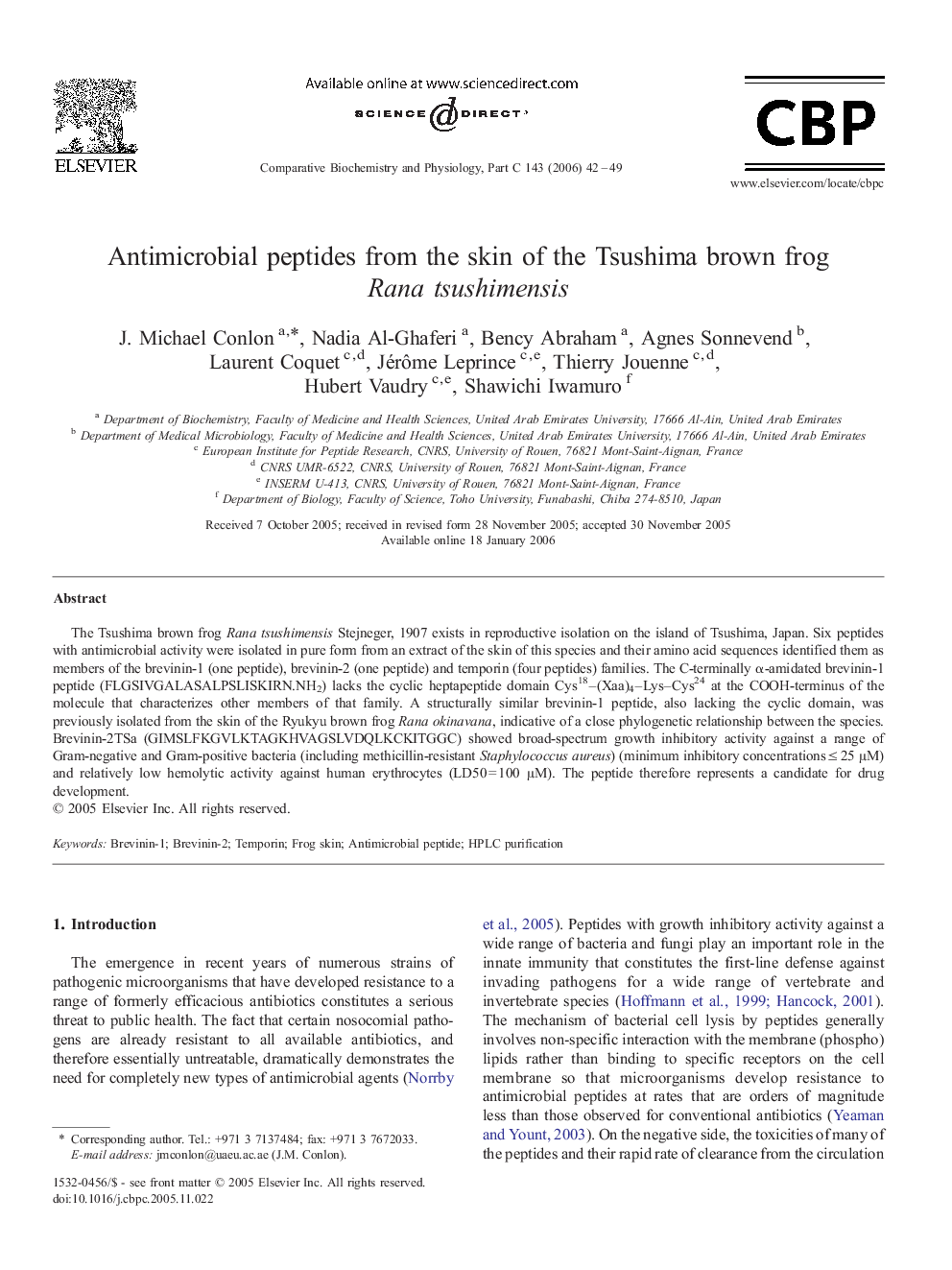| Article ID | Journal | Published Year | Pages | File Type |
|---|---|---|---|---|
| 1978208 | Comparative Biochemistry and Physiology Part C: Toxicology & Pharmacology | 2006 | 8 Pages |
The Tsushima brown frog Rana tsushimensis Stejneger, 1907 exists in reproductive isolation on the island of Tsushima, Japan. Six peptides with antimicrobial activity were isolated in pure form from an extract of the skin of this species and their amino acid sequences identified them as members of the brevinin-1 (one peptide), brevinin-2 (one peptide) and temporin (four peptides) families. The C-terminally α-amidated brevinin-1 peptide (FLGSIVGALASALPSLISKIRN.NH2) lacks the cyclic heptapeptide domain Cys18–(Xaa)4–Lys–Cys24 at the COOH-terminus of the molecule that characterizes other members of that family. A structurally similar brevinin-1 peptide, also lacking the cyclic domain, was previously isolated from the skin of the Ryukyu brown frog Rana okinavana, indicative of a close phylogenetic relationship between the species. Brevinin-2TSa (GIMSLFKGVLKTAGKHVAGSLVDQLKCKITGGC) showed broad-spectrum growth inhibitory activity against a range of Gram-negative and Gram-positive bacteria (including methicillin-resistant Staphylococcus aureus) (minimum inhibitory concentrations ≤ 25 μM) and relatively low hemolytic activity against human erythrocytes (LD50 = 100 μM). The peptide therefore represents a candidate for drug development.
